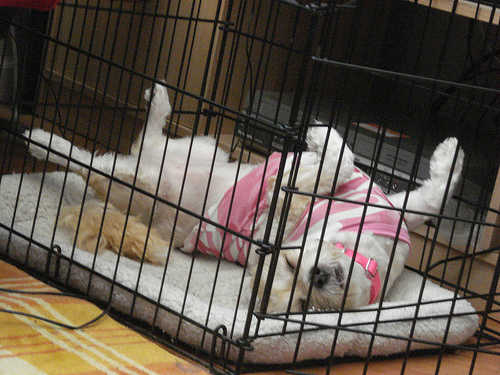Category: Things Your Senior Dog Wished You Knew
-

Separation Anxiety in Older Dogs
•
Older dogs , in many cases misbehave, not because they don’t know the rules, but , for many reasons, are unable to follow them. Separation anxiety is one of the most common behaviour problems seen in older dogs. Your little guy will become anxious when he senses you are about…
-

Senior Care Kennels
•
I hate to spend even one night away from Chico and Bella because they are such a big part of my daily life. But sometimes for any number of reasons , you simply must put your senior dog in a kennel for one night or more. Before making a choice…
-

Tips For Naming Your Puppy
•
Unless you are especially attached to a certain dog name, avoid choosing one of the most popular names. You will run into other dogs with your dog’s name and it could lead to some confusion at the dog park or vet’s office. The names Bella, Bailey, Max, Molly, Buddy and…
-

Why Do Dogs Eat Grass?
•
Your guy is clearly, not a cow. You might be worried that he is sick,hungry or bored. Will eating grass hurt him? Rest assured you are not alone in your concern. Dogs eating grass is quite common, and most vets consider it normal. There are a variety of reasons might…
-
Swimming For Dogs
•
Swimming therapy for dogs is fast becoming a prescribed protocol for canine rehabilitation and strength building. Being in a pool provides an arena for non weight bearing exercise -where resistance in water is up to 20 X that of being in air. Being in a pool benefits the body in…
-

Eye Care for Senior Dogs
•
To properly care for your dogs eyes, do the following: Keep eyes clear of muscus at all times. Infections are often caused by bacteria that overgrow on mucus. Use a sterile eyewash and/or eye wipes to keep eye area clean. Apply a protective ophtalmic ointment under the top lid to…
-
Choosing a Senior Dog – The Rising Trend
•
Fact: Choosing a senior dog over puppies is becoming a trend when adopting dogs. This is the result of a recent survey conducted by Flexin International, which is in charge of the Flexpet Shelter Program. Choosing a Senior Dog – The Rising Trend In Flexin’s online survey of 1,250 pet…
-
Caring For a Senior Dog: Getting the Right Dog Bed
•
Changing the dog bed is one of the several adjustments you will have to make to comfort your senior dog. You will notice your older buddy grow increasingly uncomfortable with his bed—a sign that it’s time to replace the dog bed. When your dog is over eight years, it is…
-
Loving A Senior Dog | Video
•
httpv://www.youtube.com/watch?v=is5PQQJsO4o This video couldn’t have said it better: no dog is too old, too broken, or too worn. Rather, senior dogs are wise, resilient, and worthy. For all their admirable qualities, loving a senior dog is certainly all too easy. Their gray muzzle is a sign of their sharpened instincts.…
-
Senior Dogs Deserve a Toast!
•
httpv://www.youtube.com/watch?v=tvRkEXWqiyw Don’t you just love older dogs? They’re sweeter, gentler, and more loving than the average dog. But more importantly, they’ve grown to become part of your family. Your older dog might not be as active as before. They might have gray muzzles and thinning fur. But they’ll always be…
-
A Closer Look At Age And Dog Breeds
•
Senior status in dogs is not measured by their number of years. Your 9-yr-old pooch might qualify as a senior, while your neighbor might have a 10-yr-old dog who’s well in the mid-life stage. For the most part, senior dogs are determined by their breed. For instance, giant breeds like…
-
When Is Your Dog “Old”?
•
httpv://www.youtube.com/watch?v=sHJuu80nU30 There is no one “right” answer to this question. Just as people age differently, so do dogs. What is ‘senior’ in one dog might still be ‘middle aged’ in another dog of the same years. Do pay attention though, and see if their eyes seem a bit cloudy or…